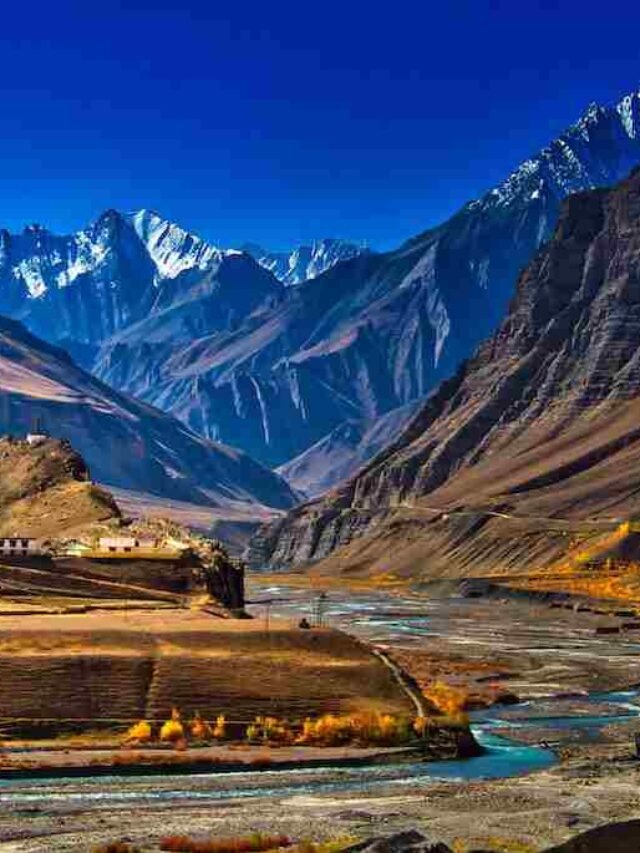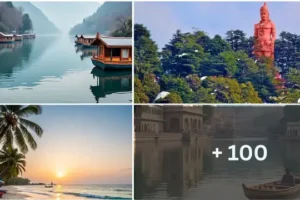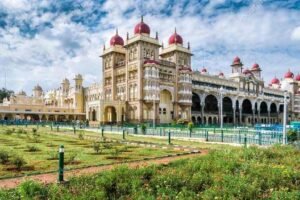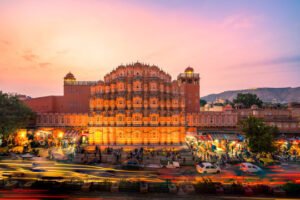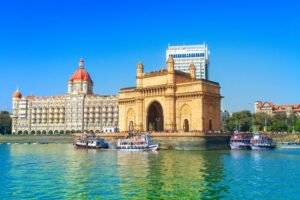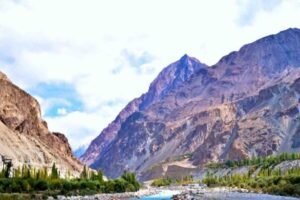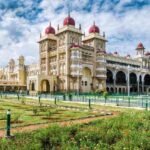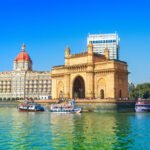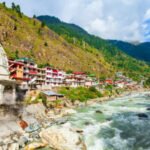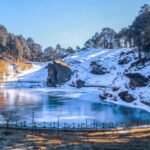The Saptdhara Yatra, The Enchanting Trek from Trilokinath Village Lahaul Spiti
The Saptdhara Yatra, The Enchanting Trek from Trilokinath Village Lahaul Spiti: The Saptdhara Yatra in Lahaul, Himachal Pradesh, India, is a religious pilgrimage rather than a scenic hike like the one near Dalhousie. It is also known as the Saptdhara Yatra (locally known as Byarji) and is considered a sacred journey by Hindus.

The Saptdhara Yatra in Lahaul is a pilgrimage trek that is believed to be one of the abodes of Lord Shiva. The trek starts from Trilokinath Temple in the village of Trilokinath and ends at the Saptdhara Yatra, which is believed to be the source of the seven sister springs.
The trek is a moderately difficult one, with a total distance of about 10 kilometers. The trail is mostly uphill, and the altitude can be challenging for some people. The best time to do the trek is in July, during the monsoon season, when the springs are at their fullest.
The Saptdhara trek holds significance for two main reasons:
- Religious Significance (Hinduism): It’s believed to be one of the abodes of Lord Shiva. Every three years, the Saptdhara Yatra, a religious pilgrimage, draws devotees to the Saptdhara sacred site.
- Natural Beauty and Adventure: The trek offers stunning scenery of the Himalayas, with waterfalls, meadows, and snow-capped peaks. It provides a challenging and rewarding experience for adventure enthusiasts seeking breathtaking views and a connection with nature.
The religious significance of the Saptdhara Yatra stems from its association with Lord Shiva, a revered deity in Hinduism. Here’s a breakdown of the religious aspects:
- Abode of Lord Shiva: The trek’s destination, Saptdhara, translates to “seven springs” and is believed to be one of the dwelling places of Lord Shiva. According to Hindu mythology, Lord Shiva is one of the supreme beings within the religion, symbolizing strength, prosperity, and the potential for transformation.
- Saptdhara Yatra: Every three years, a religious pilgrimage called the Saptdhara Yatra takes place. Devotees undertake the trek to reach the Saptdhara sacred site and participate in rituals associated with Lord Shiva. The exact reasons for why the pilgrimage occurs every three years may vary locally, but it likely follows a traditional religious cycle.
Overall, the trek is a way for devotees to connect with their faith and seek blessings from Lord Shiva in the midst of the Himalayan mountains.
In Hinduism, the Saptdhara yatra in Lahaul holds special significance because of its connection to Lord Shiva. Here’s a deeper dive into the association:
Saptdhara – The Abode
The name “Saptdhara” translates to “seven springs. “expand more Legend says these springs are sacred and represent the dwelling place of Lord Shiva. The presence of these springs itself is seen as auspicious, with the water believed to possess purifying and healing properties.
Lord Shiva
Lord Shiva’s Significance
- Lord Shiva is one of the supreme deities in Hinduism, part of the divine triumvirate alongside Brahma the Creator and Vishnu the Preserver.
- He represents many things, including:
- Transformation and overcoming illusion (maya).
- Strength and power.
- Fertility and abundance.
- Destroyer of evil and negative forces.
- Asceticism and yoga.
Connection to the Trek
- Undertaking the Sat Dhara trek allows devotees to:
- Pay homage to Lord Shiva in a place believed to be his abode.
- Participate in rituals associated with him, seeking his blessings.
- Experience a spiritual journey amidst the Himalayas, a place considered close to the heavens in Hinduism.
The Saptdhara Yatra
- Every three years, the Saptdhara Yatra, a religious pilgrimage, takes place.exclamation This pilgrimage attracts devotees who trek to Sat Dhara to participate in special rituals and ceremonies dedicated to Lord Shiva.
- The reasons behind the triennial cycle for the Yatra may have local variations, but it likely follows a traditional religious calendar significant to the region.
Legends and Mythology
There may be specific legends or stories associated with Lord Shiva and Saptdhara, but these might vary locally. It’s possible these stories explain why the location is considered an abode or why the pilgrimage occurs every three years.
Symbolism of the Springs
The seven springs themselves might hold symbolic meaning. The number seven often carries spiritual significance in Hinduism, representing completeness or spiritual perfection. The springs, with their life-giving water, could symbolize Lord Shiva’s life-giving and transformative power.
Overall Significance
The Saptdhara Yatra offers devotees a unique opportunity to combine their physical journey with a spiritual one. By trekking through challenging terrain and reaching the sacred springs, they connect with their faith, seek blessings from Lord Shiva, and experience the beauty of the Himalayas, a place believed to be closer to the divine.
Here’s a breakdown of the trek:
Day 1: Drive from Manali or Keylong to Trilokinath village. Stay overnight at a homestay or guesthouse in Trilokinath.
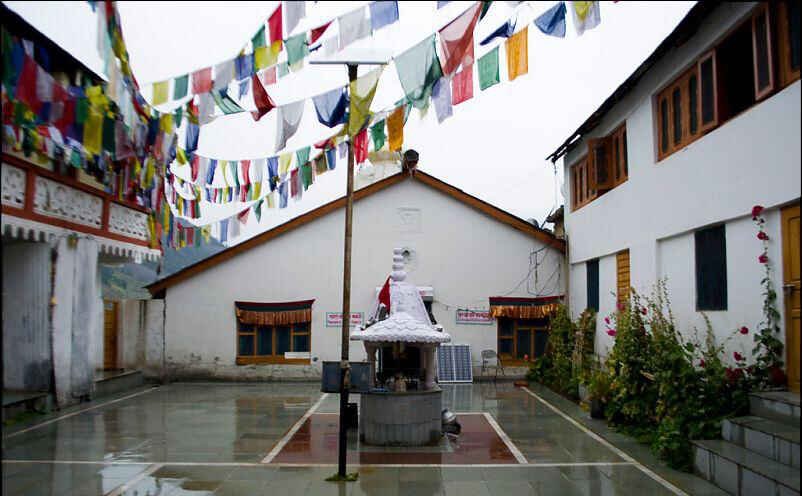
Day 2: Trek from Trilokinath village to Saptdhara Yatra. The trail follows the Satluj River for a while before climbing up a steep hill. The views from the top are amazing. Camp overnight at the Saptdhara Yatra.
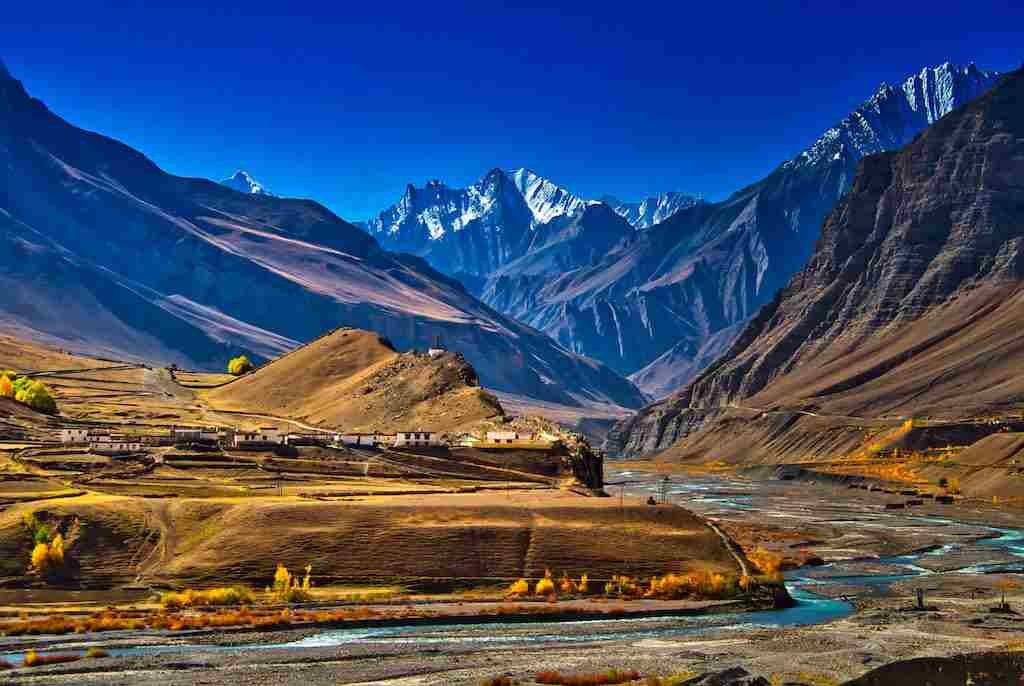
Day 3: Take a dip in the holy waters of Saptdhara and perform puja (worship) if you wish. Trek back down to Trilokinath village. Drive back to Manali or Keylong.
Here are some things to keep in mind if you are planning to do the Saptdhara Yatra:
- The trek is located at a high altitude, so it is important to acclimatize properly before starting the trek. Spend a few days in Manali or Keylong before starting the trek.
- The weather in the Himalayas can be unpredictable, so be sure to pack for all weather conditions.
- There are no shops or amenities on the trek, so you will need to carry all of your food and supplies with you.
- Be sure to hire a registered guide for the trek. The trail can be difficult to follow in some places, and a guide will be able to help you navigate the terrain.
If you are looking for a challenging and rewarding trek in the Himalayas, the Saptdhara Yatra is a great option. Just be sure to be prepared for the challenges of trekking at high altitude.
What is the Saptdhara Yatra?
This is likely a pilgrimage or trek in the Lahaul region of Himachal Pradesh, India. Lahaul is a remote area known for its beautiful mountain scenery and Buddhist monasteries.
What is the difficulty of the Saptdhara Yatra?
This will depend on the specific route and your level of fitness. Lahaul is at a high altitude, so be sure to acclimatize yourself before starting any strenuous activity.
What is the best time to do the Saptdhara Yatra?
The Lahaul region experiences cold winters with heavy snowfall. The summer months (June to September) are likely the most comfortable time to visit.
What do I need to pack for the Saptdhara Yatra?
Be sure to pack warm clothes, sturdy shoes, sunscreen, and a hat. You may also want to consider bringing a water purifier, as the water quality in remote areas can be unreliable.
